► The friendliest van on sale
► Electric VW ID. Buzz with 3.9 metres cubed cargo volume
► Car-like handling and ride
Forget your Citroen H van – if you want to be really on trend with your fair-trade brand and weasel puke coffee (actually a thing), you’ll be needing an ID. Buzz Cargo.
Just like the ID. Buzz passenger version, the electric Cargo is the feelgood van of the moment, swapping the Ford Transit’s grit and heritage for a lighter touch. It trades heavily on its looks – heck, you can even spec it in yellow or pale green – and is the very antithesis of White Van Man.
But the post-covid world of delivery drivers and builders has changed dramatically. So unlike its passenger car sibling, the Cargo isn’t the outlier – other vans have also gone electric in response to changing company and consumer demands. The ID. Buzz Cargo will have to stand up as a practical load lugger as well as a fashionistas dream.
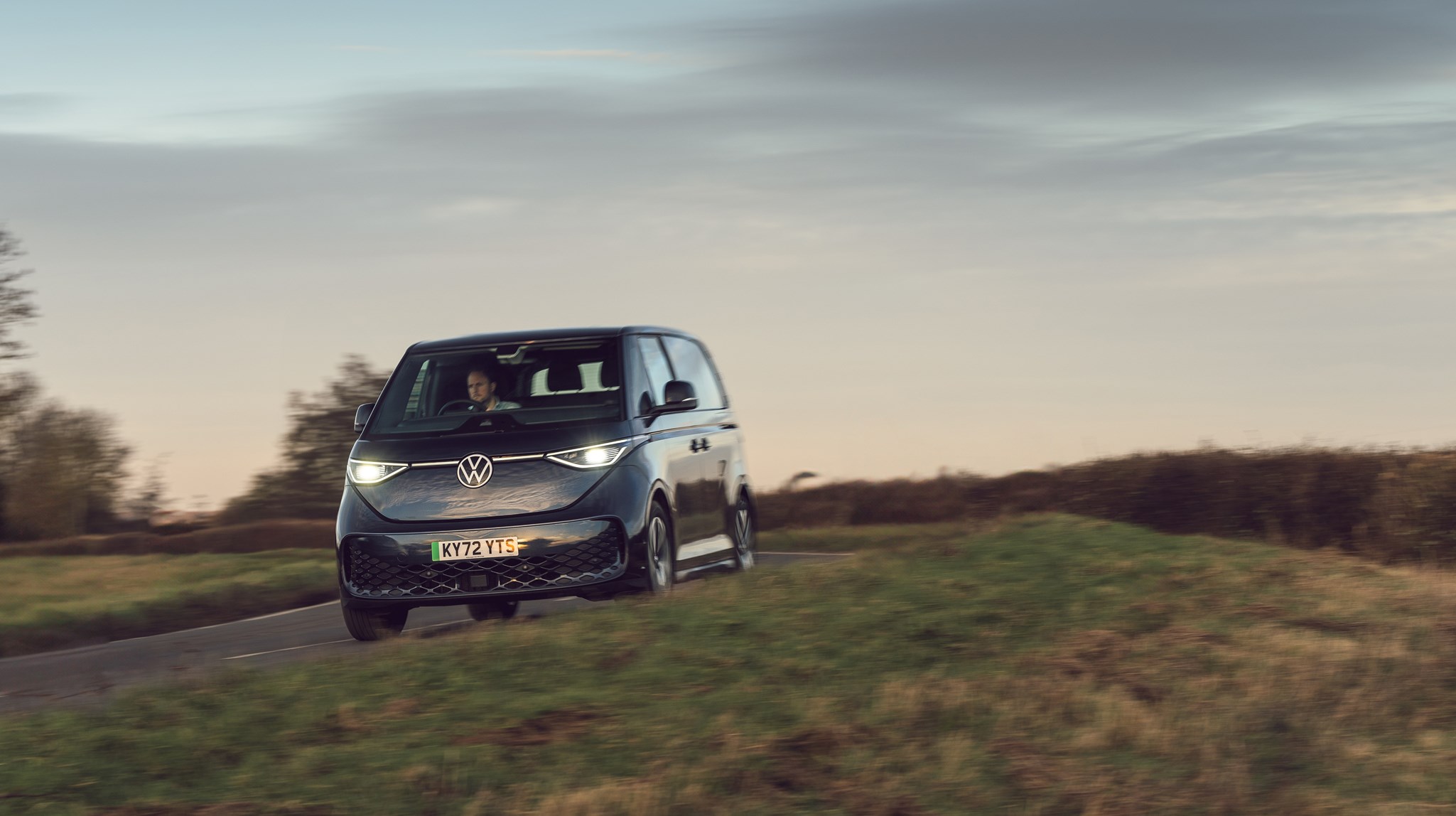
What’s new?
Everything. Although it can trace its history all the way back to the T1 van, the Buzz Cargo is an entirely new thing. Electric, with a skateboard-style battery under the body, the raw ingredients are familiar from all the other VW Group products that use the MEB platform.
Single electric motor integrated in the rear axle, single-speed transmission, minimal buttons in the cabin – anyone familiar with any of the wider ID range will recognise it.
Like the Transit, you get three seats up front (two normal, the middle one a bit more squeezed), with an option for a two-seat version. For now, it’s available in just the one wheelbase – the passenger car will get an extended seven-seat version with three rows of chairs so you’d assume the Cargo would be similar, but VW hasn’t confirmed anything yet.
What are the specs?
Cargo volume is listed as 3.9 metres cubed and the payload is 592kg – both are obviously brilliant figures in the car world but not spectacular on Planet Van. For instance, the Vauxhall Vivaro Electric has a payload of 1226kg, not only double the ID. Buzz but impressively just 130kg shy of the diesel Vivaro.
To be entirely fair to the Buzz, that Vauxhall figure is for the smaller 50kWh battery but even the 75kWh Vivaro can heft 987kg.
Still, with its 201bhp electric motor, the ID Buzz is the more powerful. Empty, 0-62mph takes 10.2 seconds and it’s flat out at 90mph.
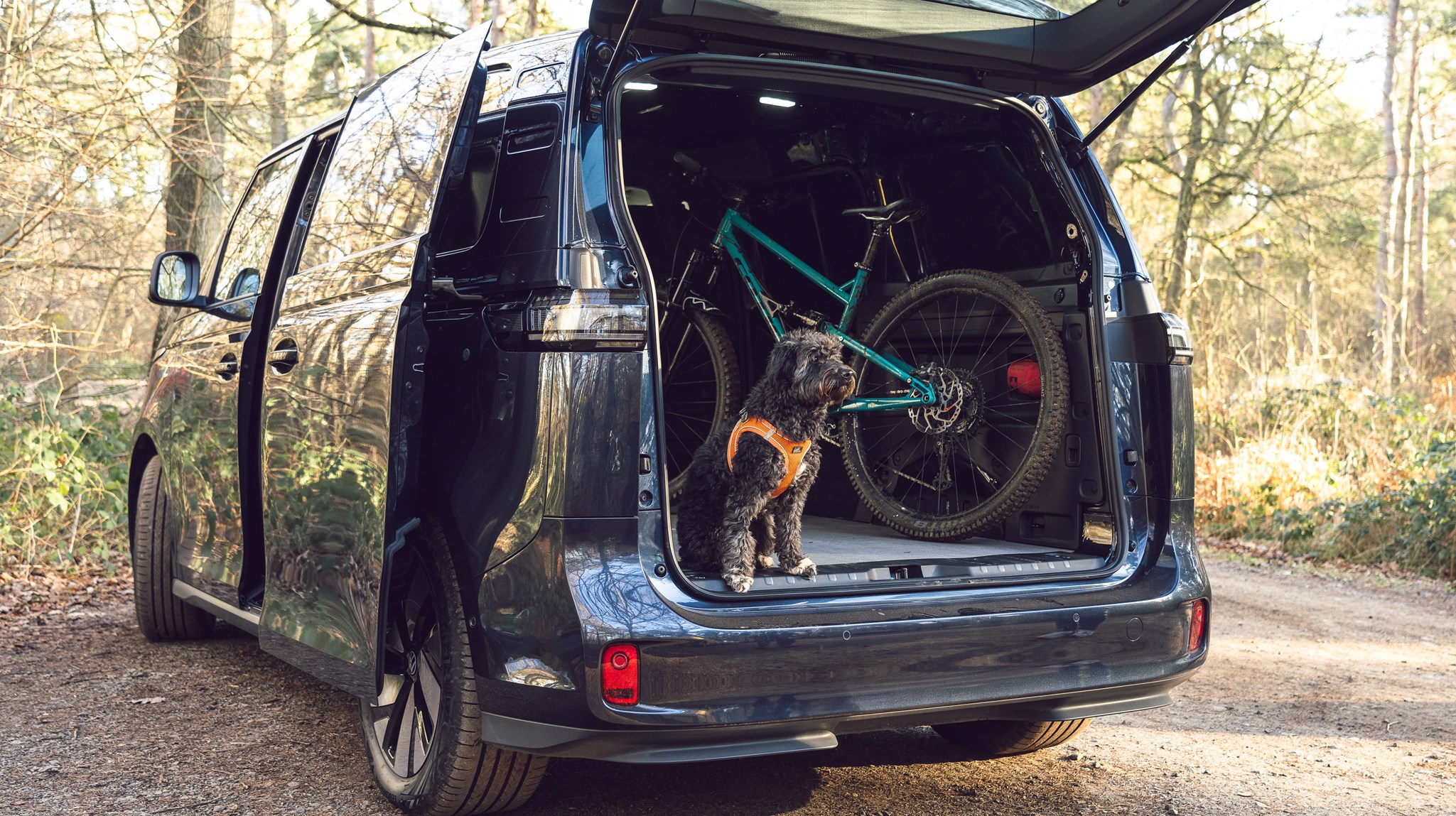
According to the government, 50 per cent of all vans in Britain stay within 15 miles of their base. So the Buzz, with its theoretical range of 254 miles and it’s real-world range of just over 200 miles from its 77kWh battery (admittedly, in brass monkeys weather) should be more than capable.
Charging times are 30 minutes for a five to 80 per cent boost, which is OK when compared to vans like the Vivaro, but not as spectacular as the top-end cars with 800V tech. It’s compatible with a CCS charger but there’s no vehicle to grid option.
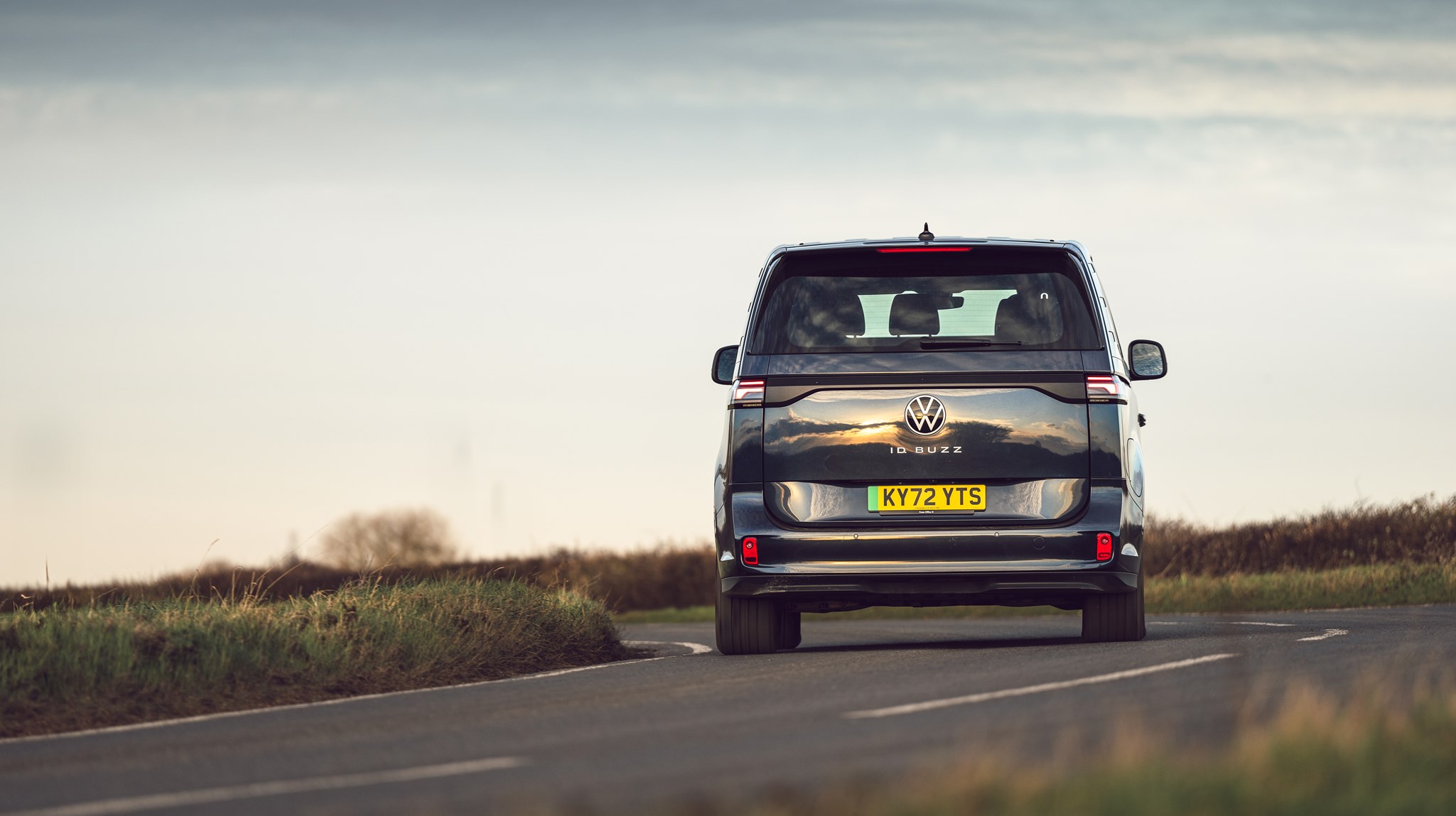
How does it drive?
For the most part, just like a car, albeit one where you’re sat up with the gods. The pace from the 201bhp motor is more than adequate for what it needs to be, with a lovely relaxed way of putting on speed that matches the generally quiet interior. Our test drive was with an empty van, but there was very little echo from the rear and the noise isolation was impressive all round.
Ride comfort was also, on the whole, impressive. The Buzz absorbs bumps well and doesn’t pitch and roll like some vans can around bends. But we did go over a series of undulations at one point that upset it, with the cabin bouncing from one to the next, seemingly propelled along by the stiff rear. I wonder if it might be better with a bit of weight in the rear, in a similar way that pick-ups like some bulk in the bed.
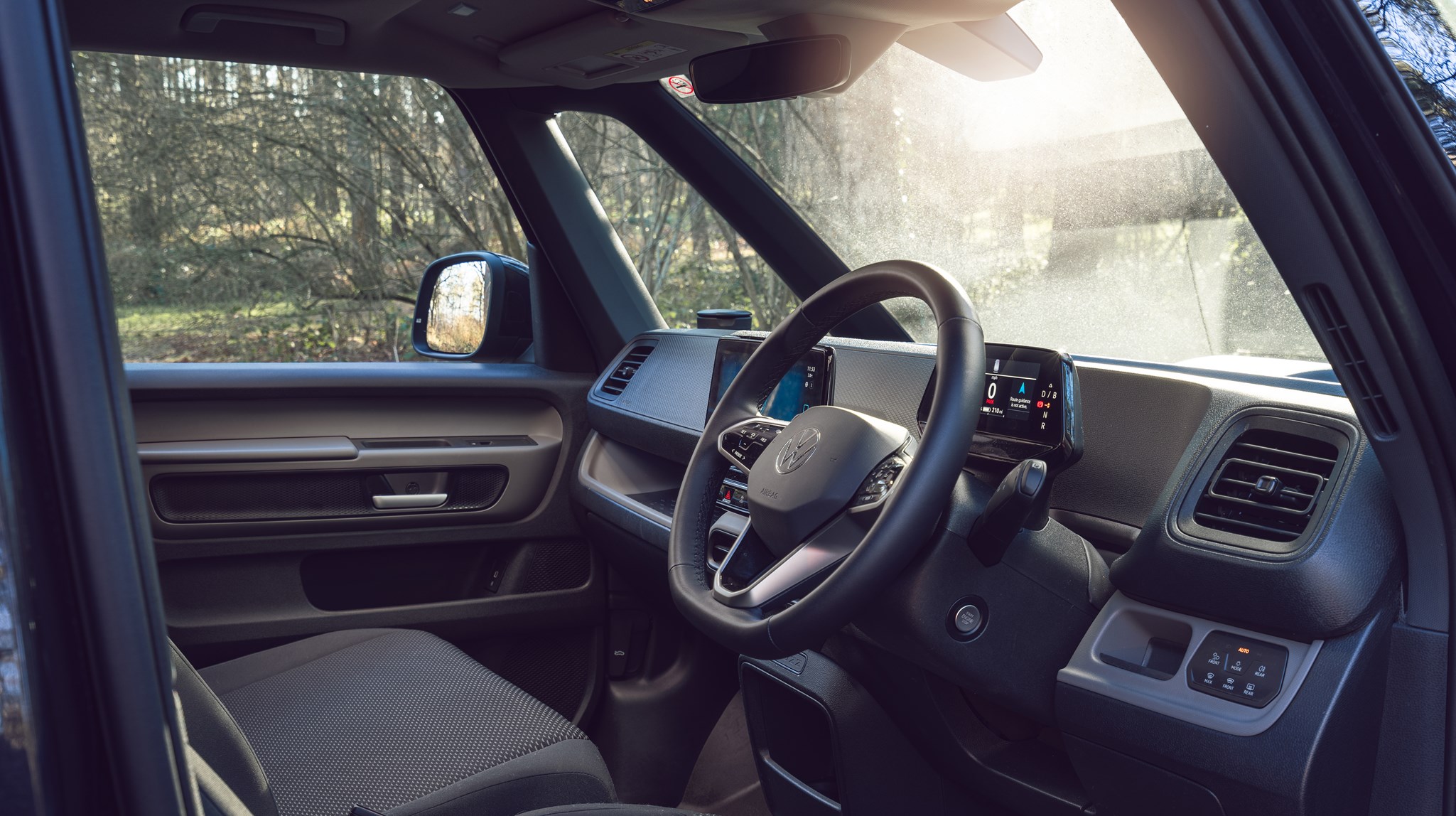
What about the interior?
It’s not as jazzy as the exterior, with more subdued colours and tough cloth seats. But it’s comfy, with a steering wheel angle that feels more car-like than some and a good view out of the enormous windscreen.
The dash view ahead is the same as other VW products, with a small screen dead ahead containing speed/range etc, with the larger touchscreen off to the left. Like the current Golf, the temperature controls are on the infernal sliders.
The cargo area is predictably flat and with lashing eyes in all the right places. A grippy floor with lashing C rails is £882 and you can get the bulkhead either with or without a window, depending on how secure you want your cargo area to be.
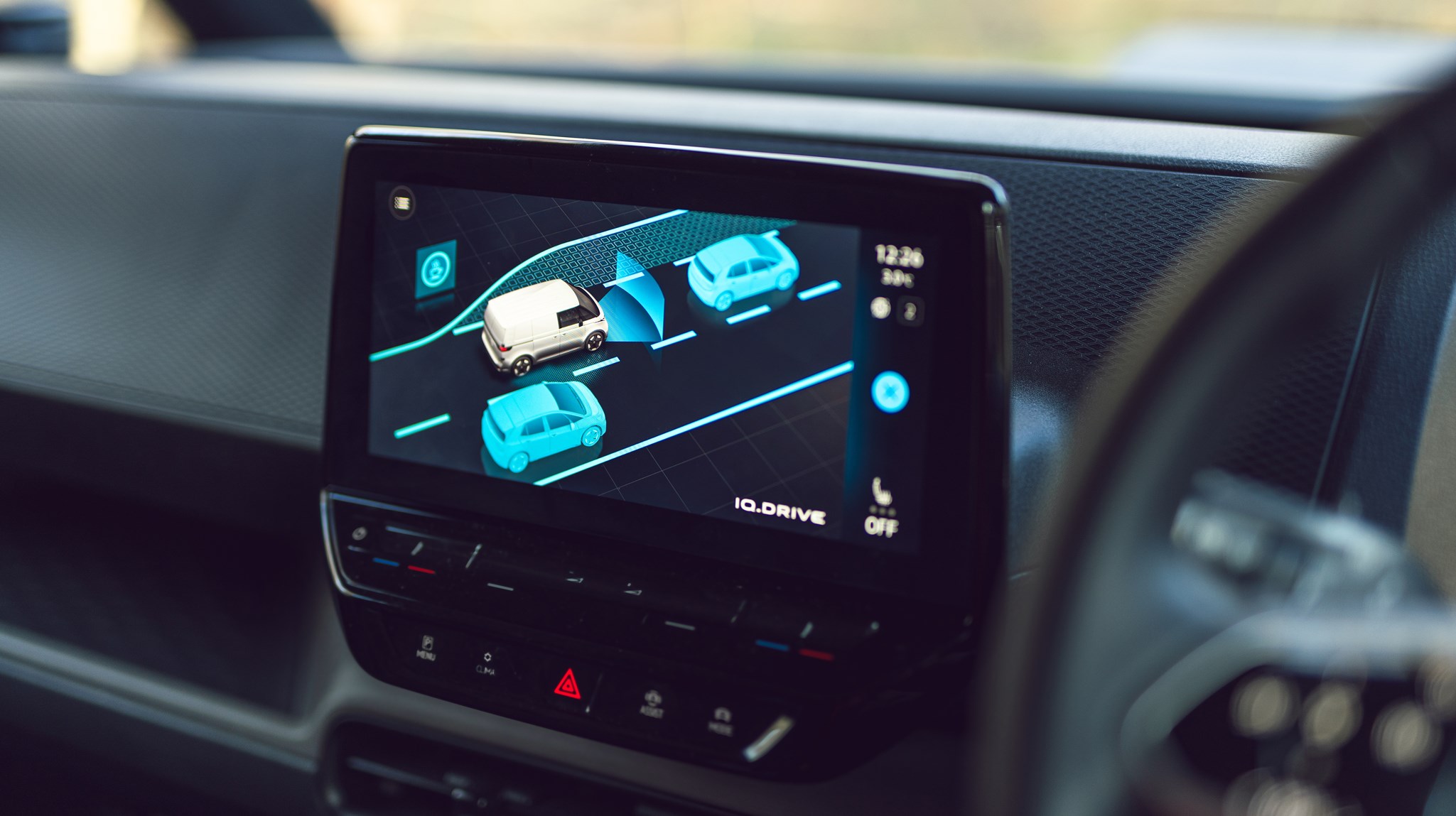
Before you buy (trims and rivals)
As it stands, the ID. Buzz is only available in two trim levels – Commerce (£48,541) and Commerce Plus (£53,641). Both come with things like Apple CarPlay/Android Auto as standard, but the latter gains ‘Discover Pro’ navigation, 19-inch wheels, adaptive cruise, body coloured bumpers, illuminated door handle recess, rear view camera and surround lighting.
In others words, if you want a van that will double up as your lifestyle vehicle as the weekend, go for the Commerce Plus. But if it’s more a question of reducing your business’s carbon footprint and sod the style, the cheaper is more than adequate.
Rivals comparison
Electric vans are still the exception rather than the rule but rivals are gathering. As we’ve already mentioned, the Vauxhall Vivaro is available as an electric van, along with all its siblings from Peugeot, Citroen and Fiat. Equally, Ford has got the e-Transit with not quite the Buzz’s range but with better practicality.
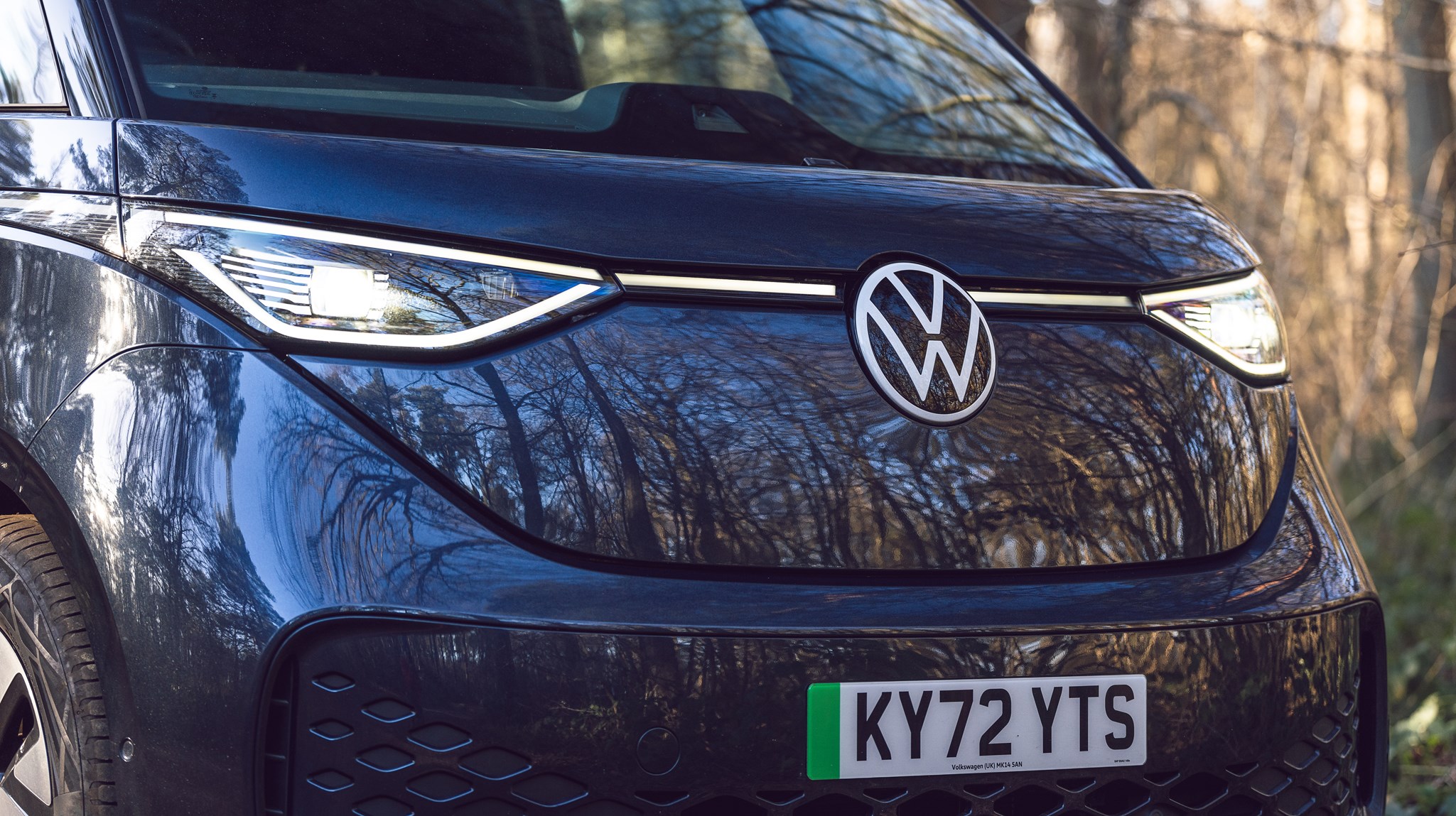
Verdict
Trading on all of VW’s iconic van heritage, right back to the T1, the Buzz has managed to bring a sense of fun to what has traditionally been a pretty dour, if also vital, area of the market.
It’s definitely not the last word in practicality, so if you want an eco-friendly van for your construction business, rivals like the Vivaro will be much better. But as an option for the delivery company, with lower payloads and more customer facing optics, it’s a fine option.